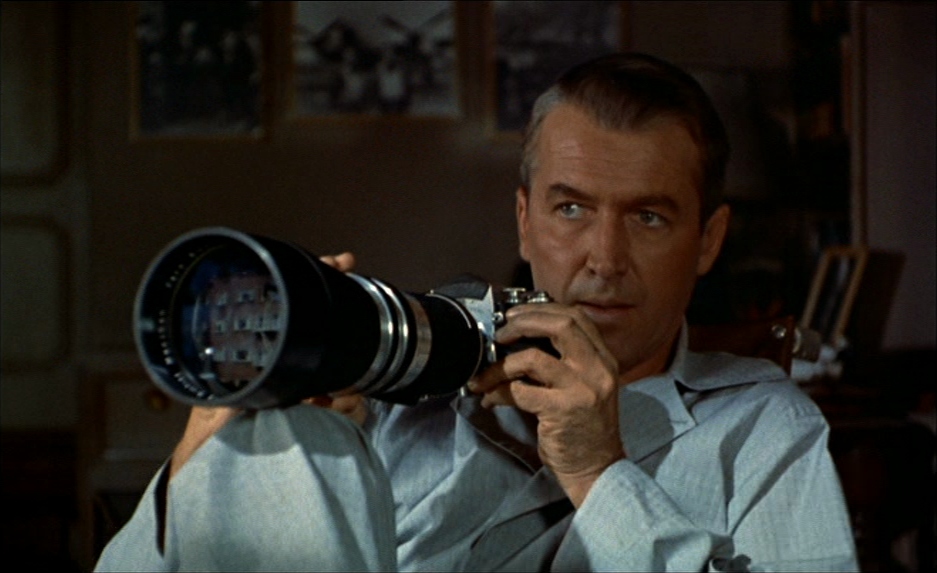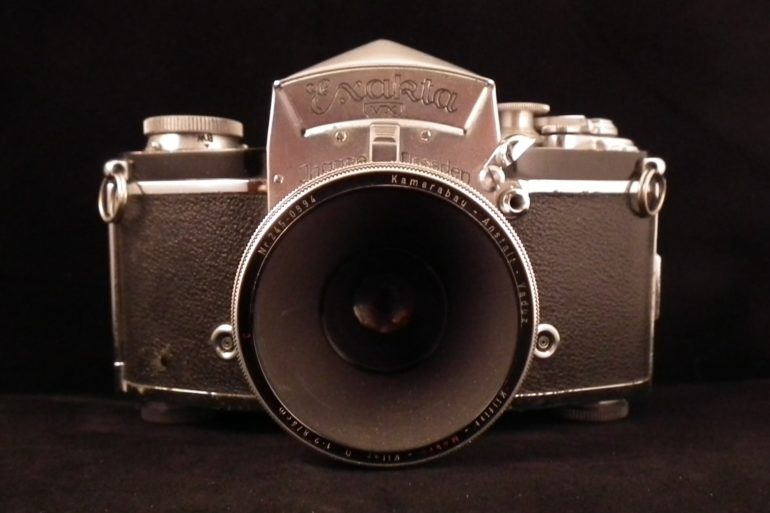Alfred Hitchcock was a cinematic genius and his work has influenced many over the years. Photographers are likely fascinated by one specific movie: Rear Window. In it, photographer L.B. “Jeff” Jefferies breaks his leg and spends time healing in his NYC apartment. Using his camera to check out what’s happening outside his window, he believes he’s witnessed a murder. The movie goes on from there, but it couldn’t have happened without the iconic camera in Rear Window.
We hate banner ads too. Download our app for iOS, iPad, and Android and get no banner ads for $24.99/year.
The Camera in Rear Window
The camera Jeff uses is the Exakta VX Ihagee Dresden. Back in 1954 when this movie was filmed, the film SLR was still very young. Nikon and Canon weren’t the household names they are today. Instead, lots of photographers still reached for Leica and Contax. Since Jeff was a photojournalist, this seems a tad odd and out of place. If you look at camera ads from the 1950s, you’ll see that SLRs still weren’t that popular. Jeff most likely would’ve been using a Leica rangefinder. In fact, the Leica M3 came out in 1954, and there’s a strong chance he would’ve bought one. However, Exacta had most of the SLR film sales back then. So if Jeff were to get an SLR, this would’ve been a logical choice.
The Exakta VX Ihagee Dresden was sold as the Exakta VX in America most likely to throw off any connections to East Germany. It used lenses like the Carl Zeiss Jena Biotar lineup. I used to own the 50mm f2 that was commonly sold with this camera. It was incredibly smooth and gave me very unique image quality.
Pixelcraft believes the lens is a 400mm f6.3 lens. They state it wouldn’t make sense for a photojournalist to have that. But considering that Jeff first got into an accident shooting a car race, it’s very possible. When we’ve shot car races, we’ve used long lenses before, so 400mm lens makes sense. A look at photos on Alamy shows this. Back then, photographers would’ve dragged the shutter and panned with the moving car to emphasize the motion blur.
Exakta VX Ihagee Dresden
It took Exacta mount lenses and boasted the following:
- Used a matte glass screen with a split image in the center
- Horiztonal Focal plane shutter
- 12 seconds to 1/1000th shutter speeds with a bulb option. This is standard for lots of cameras before the advent of electronic shutters.
- Cocking knob. It works similar to a medium format camera there the cocking of the shutter returns the mirror.
- 1/25th flash sync
- 833 grams
- Metal body
By today’s standards, it’s a very simple camera. That’s also probably one of the reasons why it’s not that popular anymore. Sure, they were durable and lasted longer than the lifetime of some folks. But for a bit more money, there are far better cameras out there that arrived later on. The 1950s isn’t exactly a time regarded for its SLRs; we talk about things like the Leica M3 and some of the TLRs that came out during this time period.
If you were to get an all-mechanical camera like the Exakta VX, there are much better options for not a whole lot more money. The Pentax Spotmatic boasted a screw mount and had a large variety of third-party lenses. Plus, they’re gorgeous and simple to use. Unlike the Exakta VX, it doesn’t have a waist-level finder option. Of course, the Nikon F series of cameras need no introduction. Similarly, the Canon F1 and a few others are masterpieces. And if you really wanted an affordable camera, there’s always the Leica R series, but keep in mind that the lenses are worth an insane amount.
Photo in story by Neal Wellons. Used with Creative Commons Permission.



